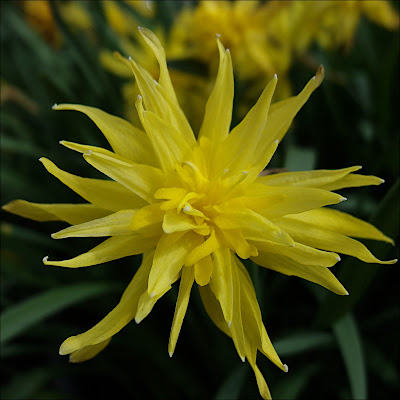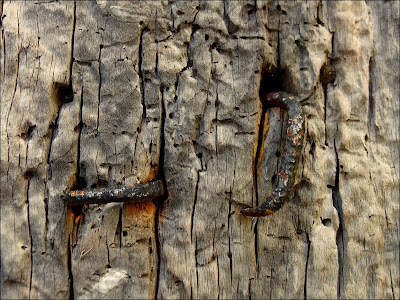More snappy snippets of news and knowledge spotted from the saddle of a rolling bicycle as I trundled through the British countryside last summer. We like to be up to date so here we include items from nearly 300 years ago alongside more recent items that are only a year or so out of date
Injustice
In May I wandered in the vicinity of the village of Southill. An ornamental lake can be glimpsed through a gap in an estate wall and, further along, a perfect little church stands among trees. Just the kind of paradise that could be enjoyed by the privileged families of old England. But what I couldn't have guessed at on that beautiful spring morning was the dark cloud that has hung over the scene for 260 years.
For Southill was the home of the family of Admiral John Byng. Byng was baptised in the village church and at 13 years of age joined the navy, working his way steadily through the ranks to eventually become an admiral. It was a successful if unremarkable career, but Byng's story should be as well-known, if for entirely different reasons, as that of Nelson.
In 1756 he was put in command of a hastily assembled fleet of ships sent to prevent the French from capturing Minorca, which was under British control at the time. The whole expedition was ill thought-out, poorly manned and equipped, and too late in setting out to be effective. After a skirmish with the French Byng realised how hopeless his position was and, following a meeting with his senior officers, he decided to withdraw to Gibraltar to have his ships repaired and form a better plan.
When George II heard of this he accused Byng of cowardice and ordered him to return to Britain. He was arrested and found guilty of ‘failing to do his utmost’ to carry out his orders. He was sentenced to death by firing squad. The King could have overruled the verdict but chose not to. The Prime Minister and senior navy men were happy to have a scapegoat to cover for their own ineptitude and so the sentence was carried out despite many people realising that it was a complete miscarriage of justice.
Voltaire heard about the case and summed it up with these words ‘in this country, it is good to kill an admiral from time to time, in order to encourage the others’. Maybe it did "encourage the others"; it certainly casts the bravery of Nelson and later heroes in a new light to realise that failure to attack the enemy may have resulted in the severest punishment.
Byng's family, who had a long association with the navy, were understandably outraged and erected this memorial in their church:
They are still seeking a pardon from the navy some 260 years later.
A Mansion For The Poor
This magnificent, elegantly-proportioned building stands in the village of Onehouse, just outside Stowmarket. It dates from around 1780 and was commissioned by several of the wealthiest members of the community, but not for themselves. It was known as "The House For The Poor Of The Hundred Of Stow" and was a workhouse for the homeless and destitute of the area. Every community had some sort of provision for the penniless but few were as palatial as this. Many of the Poor Law commissioners lived in the area and naturally wanted to enhance the character of their home area. Some may have even been jealous of such fine architecture; it's doubtful they would have enjoyed working under the strict regime within.
Mr Goose
You know how I like a good village sign. And this one from the Hertfordshire village of Sandon is a favourite of mine. It features a large white goose and might lead you to expect some quaint old English folk tale about a magical bird from long ago. But no, this is (or was) a real flesh and blood goose from quite recent times.
This goose used to inhabit Sandon village green and could often be seen sheltering inside the telephone box. What's more this goose firmly believed itself to be a duck and could sometimes be seen ushering ducks and ducklings across the village street. At other times it could be as grumpy as any of its kind.
But no more. A year ago the much-loved bird was reported to have been cruelly shot and the local police were called upon to investigate. Hard evidence was hard to come by as the corpse had been buried by a well-meaning parishioner. Police exhumed the body and found that it had actually been killed by a blunt instrument. As yet the murderer remains at large.
Out Of Sight
In 1610 work began on a new watercourse to supply fresh drinking water to the people of Cambridge. Thomas Hobson was one of those who organised and paid for the work and the new stream became known as Hobson's Conduit. Once in the town the water was channelled by way of roadside runnels and underground piping. In St Andrew's Street the sharp-eyed may spot this cast-iron cover marking its course.
I've mentioned before that Hobson is also remembered in the expression "Hobson's choice". He hired out horses from a stables within the town and rotated his horses strictly so that none was overworked. If you hired a horse from Hobson you had to accept the animal he offered you. So "Hobson's choice" means no choice at all!
This Little Bird
Cley-next-the-Sea in Norfolk is one of the many great places to watch birds in North Norfolk. It's quite a small place but it has an enormous church. This is a much more frequent state of affairs in East Anglia than one might expect and it's usually because these sleepy little villages were centres of the woollen industry in Medieval times. Here though the wealth was generated, not by wool, but by the wonderful port facilities that used to exist at Blakeney Haven, before the channels silted and sanded up.
So now the village has this huge church to look after (and pay for!). A little help is always appreciated.
And help came in the tiny form of an American White-Crowned Sparrow which, in 2008, flew 3,000 miles across the Atlantic to assist. This extremely rare visitor to these shores soon got all the many bird-watchers in the area very excited. A charity collection among the birders was made and raised £6,378 which paid for the restoration of the church's west window.
The little bird is now remembered forever in a small stained-glass panel in the window.
Take care.








































